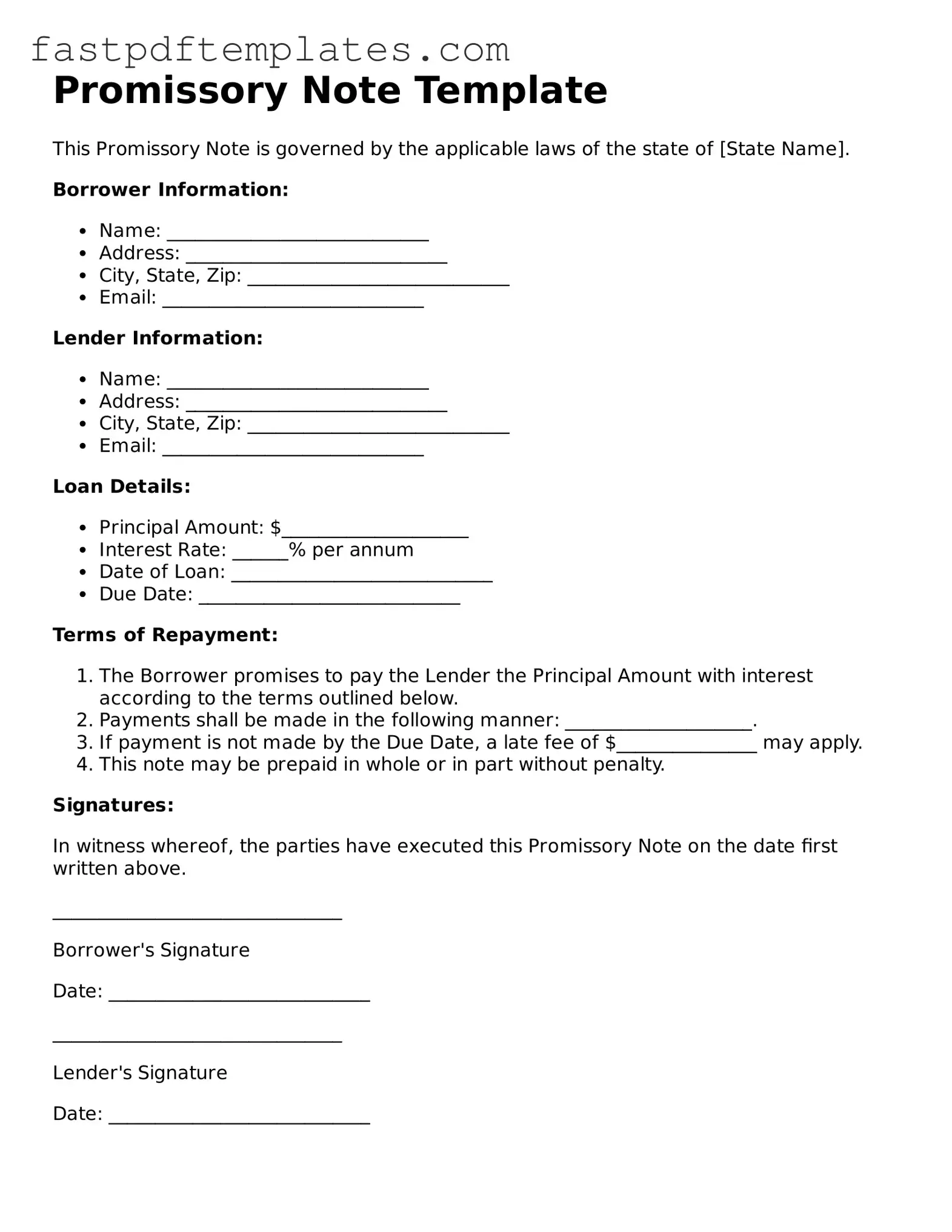Promissory Note Template
This Promissory Note is governed by the applicable laws of the state of [State Name].
Borrower Information:
- Name: ____________________________
- Address: ____________________________
- City, State, Zip: ____________________________
- Email: ____________________________
Lender Information:
- Name: ____________________________
- Address: ____________________________
- City, State, Zip: ____________________________
- Email: ____________________________
Loan Details:
- Principal Amount: $____________________
- Interest Rate: ______% per annum
- Date of Loan: ____________________________
- Due Date: ____________________________
Terms of Repayment:
- The Borrower promises to pay the Lender the Principal Amount with interest according to the terms outlined below.
- Payments shall be made in the following manner: ____________________.
- If payment is not made by the Due Date, a late fee of $_______________ may apply.
- This note may be prepaid in whole or in part without penalty.
Signatures:
In witness whereof, the parties have executed this Promissory Note on the date first written above.
_______________________________
Borrower's Signature
Date: ____________________________
_______________________________
Lender's Signature
Date: ____________________________
